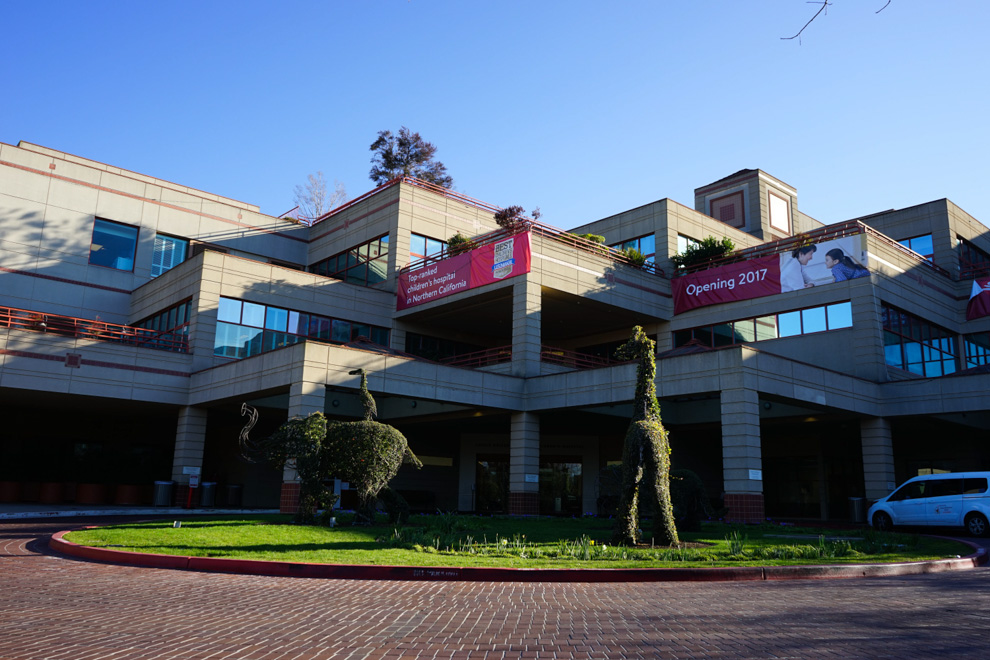Stanford Children’s Health and Lucile Packard Children’s Hospital are working closely this year with nearby health centers to provide local, accessible inpatient care and long-term outpatient programming in the hope of addressing gaps in adolescent mental health care services.
A team of Stanford doctors will help cover the 17-bed adolescent psychiatry unit at Mills-Peninsula Health Services in San Mateo, where parasuicidal and suicidal adolescent patients referred by nearby hospital emergency rooms and high schools receive overnight psychiatric attention.
The Palo Alto community has a teen suicide rate more than four times the national average and is notorious for two student suicide clusters affecting Gunn High School and Palo Alto High School since 2009. Because there are no adolescent inpatient care units in Santa Clara County, Mills-Peninsula is the closest inpatient unit in the Peninsula area.
“Over the years I’ve had a good relationship with the team at Stanford Health’s adolescent psychiatry division and we’ve developed a sense that we could work more closely together,” said Daniel Becker ’77, medical director of behavioral health at Mills-Peninsula.
Many patients who are transferred to inpatient care end up with different doctors than they see for regular outpatient treatment at Stanford clinics and facilities, resulting in the loss of important information and the “erosion” of the patient experience, Becker said.
“One way to smooth out the potential discontinuities between levels of care or facilities is to have doctors or clinicians from the same team working across those settings,” he said.
Antonio Hardan, with whom Becker has worked closely for nearly two years, is the director of the division of child and adolescent psychiatry at Stanford Medical Center. Hardan is coordinating the more intensive outpatient programs in the hope they will complement the continuity of care from inpatient psychiatric doctors.
“There is a need for us here at Stanford to develop a continuum of care between traditional outpatient and inpatient services,” Hardan said, discussing the inspiration for the new intensive outpatient program. “We have been mostly heavily focused on outpatient therapy so we had a void in higher level of care.”
A six-month outpatient program run by Stanford Children’s Health will include an optional, intensive eight-week component focusing on dialectical behavior therapy (DBT), a form of cognitive behavioral therapy particularly effective for chronically suicidal individuals. The outpatient component will consist of weekly individual, group and family therapy sessions that last for three hours a day, three to four days a week. Patients will have the flexibility to participate in either the outpatient or intensive outpatient program (IOP). They will even be allowed to switch between programs depending on the severity of their symptoms.
Hardan said he and his colleagues would like to add a partial hospital program in the future, but for now, they are focusing on the outpatient and inpatient program they have planned.
Organizations such as Adolescent Counseling Services (ACS) in Redwood City contribute to local youth mental health care by providing a network of family therapists and professionally-led support groups to teens, tweens and young adults in Santa Clara and San Mateo counties. The organizations work with schools like Palo Alto High School and provide on-site counselors for students, and they often refer patients to inpatient facilities like Mills-Peninsula.
Christine Tam, the director of ACS, says that providing targeted, accessible and comprehensive care, especially on-site at schools, where teens spend most of their day, can help combat the stigma that often prevents mental health care from being prioritized.
“School is the most accessible place for them to get services and while we do provide on-site services for them, there is always a need for more,” Tam said. “We do get really full.”
According to Tam, although many outside therapists may be available, families sometimes struggle to get past the stigma of mental health to prioritize care or find therapists that will take their insurance.
“Even when we do make referrals outside, it’s really hard for us to know whether the family is actually taking that referral and going and getting the services and treatment they need,” she said.
In spite of the stigma around mental health care, Becker and his colleagues are optimistic. They point to the evolving trajectory of adolescent mental health support, which includes increased screening for psychiatric illness in primary care and slowly changing perceptions about mental health.
“Teens are especially sensitive to social feedback, so if something is highly stigmatized, that would be something they would think twice about getting help for,” Becker said. “That is changing quite a bit. We have a long way to go still, but we have already come a long way, and I’m very happy about that.”
Contact Sandra Ortellado at sortella ‘at’ stanford.edu.
An earlier version of this article incorrectly reported two words in Daniel Becker’s quotes. The Daily regrets this error.
